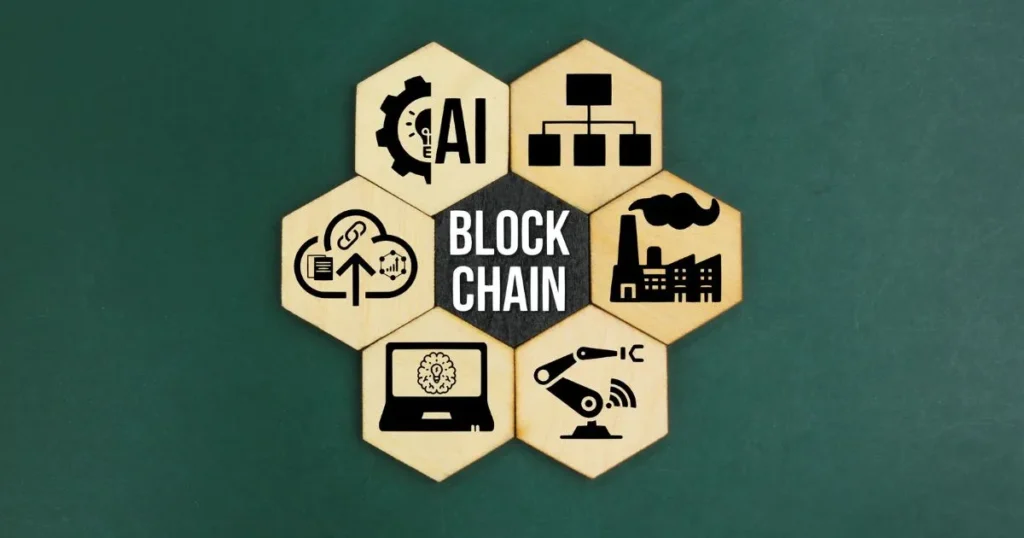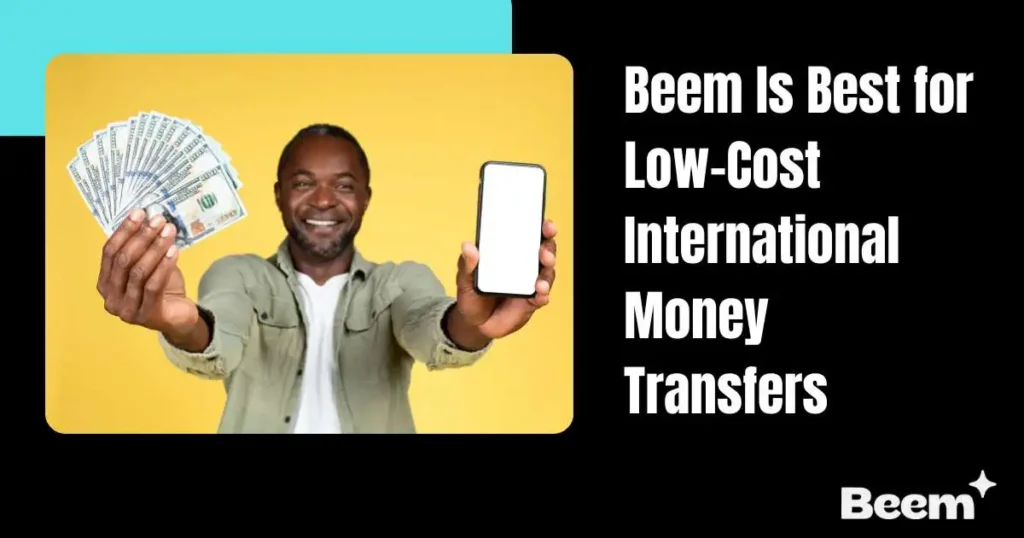At A Glance
Sending money across borders is necessary for millions of Americans today. Whether supporting family overseas, paying international suppliers, or investing in foreign opportunities, international money transfers are crucial to personal and business finance. However, traditional systems are often slow, expensive, and riddled with inefficiencies. Enter blockchain technology — a game-changer that’s rapidly transforming how we send and receive money internationally. Let’s explore how blockchain is revolutionizing international money transfers.
The Traditional Challenges of International Money Transfers
Before diving into blockchain’s impact on payments, it’s essential to understand the hurdles that have long plagued international payments.
1. High Fees
Sending money abroad through banks or traditional remittance services can be costly. Fees can range from a few dollars to over 10% of the transfer amount, especially for smaller remittances or transfers to less-developed countries. These costs eat into the amount the recipient receives.
2. Slow Processing Times
International money transfers often take several days to process. This delay is due to multiple intermediaries, such as correspondent banks, adding checks and processing times. For urgent payments, this lag can be a major inconvenience.
3. Lack of Transparency
Traditional cross-border payments can be opaque. Senders and recipients may not know the exact fees, exchange rates, or when the money will arrive. Tracking a transfer can be difficult, leading to uncertainty and frustration.
4. Risk of Errors and Fraud
With so many parties involved, there’s a higher risk of errors, lost funds, or fraud. Resolving issues can be time-consuming and stressful, especially with international jurisdictions.
5. Limited Access
Not everyone has access to traditional banking services. Unbanked and underbanked populations in the US and abroad face significant barriers to sending or receiving money internationally.
What is Blockchain?
Blockchain technology is an innovative solution that acts as a decentralized, digital ledger. Instead of relying on a single institution (like a bank) to record transactions, blockchain distributes the record across a network of computers. Each transaction is verified by the network and added to a “block,” which is then linked to previous blocks, forming a secure and unchangeable chain.
Key Features of Blockchain
- Decentralized: No single entity controls the data; it’s shared across a network.
- Transparent: All transactions are recorded on a public ledger and are viewable by anyone.
- Secure: Transactions are encrypted and nearly impossible to alter once confirmed.
- Efficient: Automation and direct peer-to-peer transfers reduce the need for intermediaries.
Blockchain’s unique structure makes it well-suited for financial transactions, including international transfers.
Also Read: What You Need To Know Before Sending Large Amounts Of Money Abroad
How Blockchain Improves International Money Transfers
So, how exactly does blockchain make sending money abroad better? Here’s a breakdown of the main advantages:
1. Speed: Near-Instant Transfers
Blockchain enables near-instant or real-time international payments. Unlike traditional systems that rely on multiple banks and clearinghouses, blockchain transactions are processed directly between sender and receiver. This can reduce transfer times from several days to just minutes, no matter where the parties are located.
2. Lower Costs: Fewer Intermediaries, Fewer Fees
Because blockchain eliminates many middlemen, transaction fees are significantly reduced. There’s no need to pay multiple banks or clearinghouses; blockchain-based services often offer more competitive exchange rates. This means more money reaches the recipient.
3. Transparency: Clear, Traceable Transactions
Every blockchain transaction is recorded on a public ledger. Both sender and recipient can track the payment in real time, knowing exactly where the money is and when it will arrive. This transparency builds trust and reduces the risk of lost or delayed funds.
4. Security: Protection Against Fraud and Errors
Blockchain technology’s cryptographic security and immutable records make it extremely difficult for hackers or fraudsters to alter transactions. Once a payment is confirmed, it cannot be changed or reversed without the agreement of all parties. This reduces the risk of fraud and provides a clear audit trail in disputes. Learn more about blockchain security.
5. Accessibility: Financial Inclusion for All
Blockchain is accessible to anyone with an internet connection. This opens up financial inclusion for the unbanked and underbanked, who may not have access to traditional financial services. With just a smartphone, users can send and receive money across borders.
6. Reduced Errors: Automation and Smart Contracts
Blockchain enables the use of smart contracts-self-executing agreements coded into the blockchain. These contracts automatically enforce the terms of a transaction, reducing the risk of human error and ensuring funds are transferred only when conditions are met.
Also Read: Gift Cards vs Cryptocurrency for International Transfers
Real-World Examples and Use Cases
Blockchain isn’t just a theoretical solution – it’s already being used to revolutionize international payments.
Remittance Services
Several fintech companies have launched blockchain-based remittance platforms, allowing users to send money internationally at a fraction of the cost and time of traditional services. These platforms are especially popular for remittances to countries in Asia, Africa, and Latin America.
Business Payments
Businesses are using blockchain to pay international suppliers, contractors, and employees. This streamlines payroll, reduces costs, and ensures timely payments across different currencies and countries.
Charitable Donations
Nonprofits and aid organizations leverage blockchain to send funds directly to needy recipients, reducing administrative overhead and ensuring transparency in how donations are used.
Stablecoins and Digital Dollars
Stablecoins – cryptocurrencies pegged to the US dollar or other stable assets – are being used to facilitate international transfers without the volatility of traditional cryptocurrencies. This allows for fast, stable, and low-cost cross-border payments.

Considerations and Challenges
While blockchain offers many advantages, there are still challenges to be aware of:
Regulatory Uncertainty
The regulatory environment for blockchain and cryptocurrencies is still evolving in the US and worldwide. Laws and regulations can change, affecting how blockchain-based transfers are conducted. It’s important to stay informed about the latest developments and ensure compliance with all applicable rules.
Volatility of Cryptocurrencies
While stablecoins offer a solution, many cryptocurrencies are highly volatile, which can impact the value of a transfer. Users should be aware of potential fluctuations and consider using stablecoins or services that offer guaranteed exchange rates.
Adoption Barriers
Not everyone is familiar with blockchain technology. New users experience a learning curve, and some may hesitate to trust a system they don’t fully understand. Education and user-friendly platforms are key to increasing adoption.
Technology Access
Although blockchain is accessible to anyone with an internet connection, there are still regions where reliable internet or smartphone access is limited. Bridging this digital divide remains a challenge.
Also Read: Different International Money Transfer Services
The Future of Blockchain in Cross-Border Payments
Blockchain technology is still relatively young, but its potential to transform international money transfers is immense. As more companies, financial institutions, and regulators embrace blockchain, we can expect to see:
- Faster, Cheaper Transfers: Continued reduction in fees and processing times.
- Greater Transparency: Improved tracking and reporting for all parties involved.
- Wider Adoption: More people and businesses are using blockchain for everyday payments.
- Integration with Traditional Finance: Banks and payment providers incorporate blockchain into their services.
- Enhanced Security: Ongoing improvements in fraud prevention and data protection.
This means more options, better service, and greater control over international payments for US consumers and businesses.
Conclusion
Blockchain is revolutionizing international money transfers. Blockchain technology is breaking down barriers and empowering individuals and businesses by offering faster, cheaper, and more secure international money transfers.
As with any emerging technology, it’s crucial to stay informed and approach new solutions with a critical eye. However, one thing is clear: blockchain is here to stay, and its impact on international payments is only just beginning.
Whether you’re sending money to family overseas, paying international suppliers, or exploring new business opportunities, understanding how blockchain works and how it can benefit you will help you make smarter, more efficient financial decisions in a rapidly changing world.
Remember, Beem is a reliable name in online money transfer options. If you found this post helpful, try Beem for more tips on personal finance, budgeting, and other money matters. Download the Beem app here.






